
5818 Results


Learn the importance of each and every job within the hive! This lesson includes learning objectives, material and resource lists, background information, activities, reading selections, writing assignments, a game, assessments, and support documents. See the Educator's Guide for more video links and recommended readings.
- Subject:
- Biology
- Education
- Elementary Education
- Environmental Science
- Environmental Studies
- Life Science
- Material Type:
- Activity/Lab
- Assessment
- Game
- Lesson Plan
- Reading
- Teaching/Learning Strategy
- Author:
- The Bee Cause Project
- Date Added:
- 12/18/2020
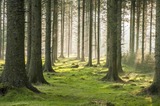
This is a Google Slide on biodiversity and then activities followed by a Google Forms quiz.
- Subject:
- Biology
- Ecology
- Physical Geography
- Material Type:
- Assessment
- Homework/Assignment
- Lesson Plan
- Author:
- Allison Hoisington
- Date Added:
- 10/26/2020

Long Description:
Authors and editors: Haley Zanga, Audrey Boraski, Alana Olendorf, Marisa Benjamin, Haley Fantasia, Simone McEwan, Jaime Marsh, Melissa Wydra, Will Trautmann, Emily Michaeles, Maddi Ouellette, Andrew Fuhs, Allie Tolles, Suki Graham, Mary Swain, Devon Audibert, Sarah Larsen, Emma Verville, Tim Brodeur, Jason Charbonneau, Christian Paparazzo, Bryce Chounard, Malisa Rai, Jennifer Rosado, Morgan Tupper
Chief Editors, final revision: Haley Zanga, Audrey Boraski, Alana Olendorf
Chief Editor, first draft: Andrew Fuhs
Managing Editors and Editorial team leaders, first draft: Bryce Chounard, Emily Michaeles, Maddi Ouellette
Word Count: 40031
(Note: This resource's metadata has been created automatically as part of a bulk import process by reformatting and/or combining the information that the author initially provided. As a result, there may be errors in formatting.)
- Subject:
- Biology
- Life Science
- Date Added:
- 02/02/2024




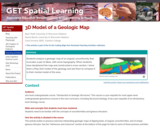
Play-Doh model of a geologic map
Provenance: Carol Ormand Ph.D., Carleton College
Reuse: This item is offered under a Creative Commons Attribution-NonCommercial-ShareAlike license http://creativecommons.org/licenses/by-nc-sa/3.0/ You may reuse this item for non-commercial purposes as long as you provide attribution and offer any derivative works under a similar license.
Students analyze a geologic map of an angular unconformity that truncates a pair of dikes, with some topography. When students have deciphered the map and constructed a cross-section, I show them a Play-Doh model of the geology and ask them to compare it to their mental model of the area.
(Note: this resource was added to OER Commons as part of a batch upload of over 2,200 records. If you notice an issue with the quality of the metadata, please let us know by using the 'report' button and we will flag it for consideration.)
- Subject:
- Biology
- Life Science
- Mathematics
- Measurement and Data
- Material Type:
- Activity/Lab
- Provider:
- Science Education Resource Center (SERC) at Carleton College
- Provider Set:
- Teach the Earth
- Author:
- Basil Tikoff, University of Wisconsin-Madison Naomi Barshi, University of Wisconsin-Madison Carol Ormand, SERC, Carleton College
- Date Added:
- 09/01/2022
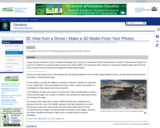
Using cameras mounted to drones, students will design and construct an experiment to take enough photos to make a 3-dimensional image of an outcrop or landform in a process called structure from motion (SfM). This activity has both a hands-on component (collecting data with the drone) and a computer-based component (creating the 3-dimensional model).___________________Drones can take photos that can be analyzed later. By planning ahead to have enough overlap between photos, you take those individual photos and make a 3-dimensional image!In this activity, you guide the students to identify an outcrop or landform to study later or over repeat visits. They go through the process to plan, conduct, and analyze an investigation to help answer their science question.The Challenge: Design and conduct an experiment to take enough photos to make a 3-dimensional image of an outcrop or landform, then analyze the image and interpret the resulting 3-d image.For instance they might wish to study a hillside that has been changed from a previous forest fire. How is the hillside starting to shift after rainstorms or snows? Monitoring an area over many months can lead to discoveries about how the erosional processes happen and also provide homeowners, park rangers, planners, and others valuable information to take action to stabilize areas to prevent landslides.
(Note: this resource was added to OER Commons as part of a batch upload of over 2,200 records. If you notice an issue with the quality of the metadata, please let us know by using the 'report' button and we will flag it for consideration.)
- Subject:
- Biology
- Life Science
- Mathematics
- Measurement and Data
- Statistics and Probability
- Material Type:
- Activity/Lab
- Provider:
- Science Education Resource Center (SERC) at Carleton College
- Provider Set:
- Teach the Earth
- Author:
- Shelley Olds
- Date Added:
- 08/27/2022

Learn how honey bees work together as a hive to provide for their own needs while pollinating our planet's flowers! This lesson includes learning objectives, material and resource lists, background information, activities, reading selections, writing assignments, a game, assessments, and support documents. See the Educator's Guide for more video links and recommended readings.
- Subject:
- Biology
- Education
- Elementary Education
- Environmental Science
- Environmental Studies
- Life Science
- Material Type:
- Activity/Lab
- Assessment
- Lesson Plan
- Reading
- Teaching/Learning Strategy
- Author:
- The Bee Cause Project
- Date Added:
- 12/18/2020





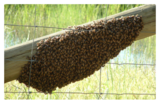
Learn how honey bees manage their community through swarming. This lesson includes learning objectives, material and resource lists, background information, activities, reading selections, writing assignments, a game, assessments, and support documents. See the Educator's Guide for more video links and recommended readings.
- Subject:
- Biology
- Education
- Elementary Education
- Environmental Science
- Environmental Studies
- Life Science
- Material Type:
- Activity/Lab
- Assessment
- Lesson Plan
- Reading
- Teaching/Learning Strategy
- Author:
- The Bee Cause Project
- Date Added:
- 12/20/2020
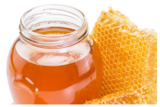
Learn how honey is made and used. This lesson includes learning objectives, material and resource lists, background information, activities, reading selections, writing assignments, a game, assessments, and support documents. See the Educator's Guide for more video links and recommended readings.
- Subject:
- Biology
- Education
- Elementary Education
- Environmental Science
- Environmental Studies
- Life Science
- Material Type:
- Activity/Lab
- Assessment
- Lesson Plan
- Reading
- Teaching/Learning Strategy
- Author:
- The Bee Cause Project
- Date Added:
- 12/20/2020

